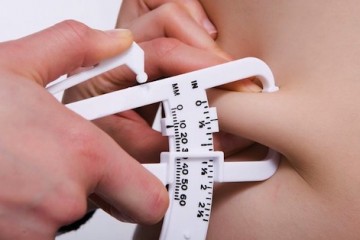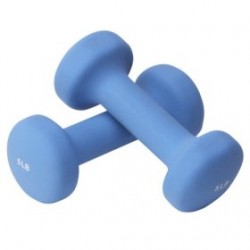How to Calculate How Many Calories You Need to Eat to Lose Weight
There are a variety of methods available to help people lose weight. Following a healthy diet and cutting calories is the safest and most practical way to lose weight. Figuring out how many calories your body needs and how many you should cut out to help you lose weight can be confusing and difficult to calculate. There are a variety of equations, estimations and graphs that can help you calculate a calorie level that will help you lose weight. Outside of using an online calculator or chart, there are equations that you can use to find a specific calorie target for your body.
Steps
Part 1 Calculating Your Calorie Needs
-
1
Calculate your basal metabolic rate (BMR). Your BMR will tell you how many calories your body needs to function properly if you spent the entire day doing absolutely nothing. This is also known as your metabolic rate or metabolism.[1]
- Your body burns calories just to fulfill life-sustaining processes like breathing, digesting food, repairing and growing tissue and circulating blood.[2]
- You will use the results from the BMR equation to find out how many calories you need to either lose weight or maintain your weight.
- Use the following equation for men: 66.47 + (13.7 * weight [kg]) + (5 * size [cm]) − (6.8 * age [years])[3]
- Use the following equation for women: 655.1 + (9.6 * weight [kg]) + (1.8 * size [cm]) − (4.7 * age [years])[4]
-
2
Account for your activity level. In addition to essential bodily functions, you must also account for the calories you burn through daily activity.[5] Once you have your BMR, multiply your BMR by the appropriate activity factor:
- If you are sedentary (little or no exercise) : BMR x 1.2
- If you are lightly active (light exercise/sports 1-3 days/week) : BMR x 1.375
- If you are moderately active (moderate exercise/sports 3-5 days/week) : BMR x 1.55
- If you are very active (hard exercise/sports 6-7 days a week) : BMR x 1.725
- If you are extra active (very hard exercise/sports and physical job or 2x training) : BMR x 1.9
- For example, a 19-year-old woman who is 5’5” and 130 pounds would plug her information into the calculator and find out that her BMR is 1366.8 calories. Then, since she is moderately active, exercising 3-5 days per week, she would multiply 1366.8 by 1.55, to equal 2118.5 calories. That is the number of calories that her body burns on an average day.
-
3
Calculate your total calorie needs for weight loss. In order to lose one pound of fat each week, you must have a deficit of 3500 calories over the course of a week.[6]
- Cutting out about 500 calories each day will result in a 3500 calorie deficit over the course of the entire week.
- Only aim to lose 1 or 2 pounds per week. If you were to lose weight through diet alone, you'd need a 500-calorie deficit every day to lose one pound in a week. If you were really pushing it and wanted to lose 2 pounds in a week, you'd need a 1000-calorie deficit every day.[7]
- Aim to cut calories out by decreasing how much you eat in addition to burning off calories through physical activity. This combination generally produces the most effective weight loss.
Part 2 Using Calories Calculations to Manage Your Weight
-
1
Keep track of how many calories you currently eat each day. When you first start your attempt to lose weight, it may be helpful to keep track of how many calories you're currently eating.
- Keep a food journal or use an online calculator to help you get an estimate of how much you currently consume.
- Compare this amount to your calculated and activity-adjusted BMR. If the numbers aren't even remotely close, it may be easier to start your diet by consuming your calculated amount of calories daily.
- Consuming a significant amount of calories less than you're typical day might be difficult. Decrease slowly by first adjusting your diet to line up with your activity-adjusted BMR level.
-
2
Don't eat less than your calculated BMR. It's a bad idea to consistently make your daily caloric intake lower than your BMR. When your body doesn't take in enough calories each day to sustain basic functions, it starts burning muscle for energy.[8]
- Very low calorie diets aren't typically considered safe or appropriate for weight loss. They do not provide enough flexibility for you consume an adequate amount of protein, vitamins or minerals that are essential to your health.[9]
- Try to keep consume at least 1200 calories daily. This is generally recommended to by the lowest amount of calories to take in daily.
-
3
Keep a food journal. Consider keeping a food journal that lists everything you eat, as well as the calories per serving and how many servings you had. Studies show that those who journal their foods regularly stick to their diet plans longer and lose more weight.[10]
- Search online for free apps or websites that allow you to enter what you ate - some will even calculate the calories for you.
- Seeing the actual amount of calories you consume each day will force you to take responsibility for your health and cut back on eating. Be vigilant about logging everything that goes into your mouth, and you'll find it's easier to stick to your diet.
-
4
Weigh yourself regularly. Another important component of weight loss is tracking your weight and overall progress.
- Studies have shown that those dieters who weighed themselves regularly were more successful long-term than those who didn't keep track on their weight.[11]
- Weigh yourself about 1-2 times per week. Try to get on the scale at the same time of day while you're wearing the same clothes for the most accurate record of progress.
- If you're not losing weight, reevaluate your total calorie intake. You may need to cut out more calories or be more accurate with your food journaling.
-
Weird But Powerful: 4 Homemade Cellulite Treatments
Cellulite affects around 10% of the male population, but it is most
-
The Fat-Burning Compound Thats Been Hiding Out In Your Wine
Wine just keeps getting easier to love: New research in the Journal of
-
10 Commandments of Weight Loss:
Last Updated 10/23/12 Weight loss is not only limiting
-
Potassium and Weight Loss
Did you know that potassium is classified as a metal? Strange as
-
Simple Natural Weight Loss Diet Tips
A healthy weight is achievable, when the state of mind is calm and co
-
8 Misconceptions About Weight Loss Surgery That You Probably Still Believe
Let's start with the big one: Weight loss surgery is a cop-out for
- DON'T MISS
- The One Tiny Change That Will Save You 527 Calories Per Day
- Weight Loss Success Stories: Secrets of a traveling dieter
- How to Lose Weight by Drinking Cocoa
- Do you gain weight with alcohol?
- Natural Weight Loss Supplements for Women
- 7 weight loss tips for Christmas
- 12 Real-World Tactics For Dealing With The Season Of Overeating
- 5 Best Ways To Lose Weight
- Weight Loss Tips For The Layman
- 7 Super Foods You Should Be Eating




